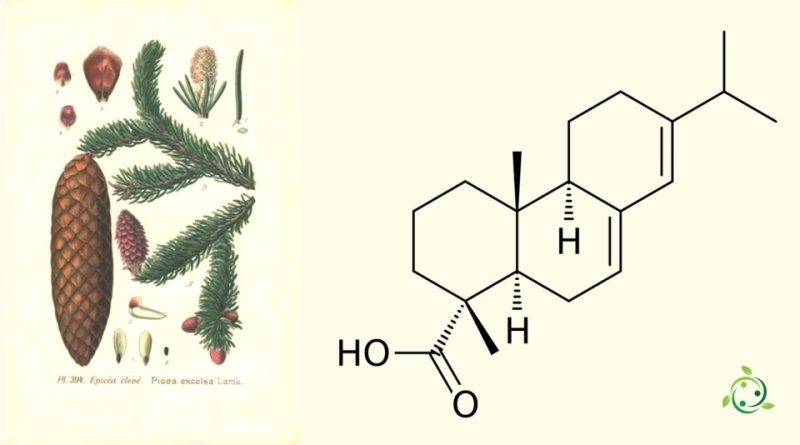Abietic acid
Abietic acid
Abietic acid, whose term in the official IUPAC nomenclature is: abieta-7,13-dien-18-oic acid is a carboxylic acid with the molecular formula: C20H30O2.
It is a resinous fatty acid, mainly present in the resin of various species of coniferous trees, including firs, pines and larches.
In particular, abietic acid is a substance present in the resins of some species of coniferous trees, including: spruce (Picea abies), silver fir (Abies alba), maritime pine (Pinus pinaster) and Scots pine (Pinus sylvestris).
Abietic acid is an important component of the resins of these plants and is responsible for their protective and antimicrobial properties.
Chemically, abietic acid is an unsaturated monocarboxylic acid with a cyclic structure. It consists of a cyclopentane nucleus with a carboxyl group (COOH) and two double bonds. Its chemical formula is C19H29COOH.
Physically, abietic acid is solid at room temperature, with a melting point of about 172-175°C. It is insoluble in water, but soluble in organic solvents such as ethanol, ether and chloroform.
This acid is commonly extracted from softwood resins by distillation and purification processes. It finds applications in various industries, including paints, lubricants, rubbers and resins. It is also used as an additive in the concrete and asphalt concrete industries to give them strength and adhesion properties.
Abietic acid is also used as a raw material for the synthesis of other chemical compounds, such as abietate esters used as plasticizers and abietate quaternary ammonium salts used as antibacterial agents.
From an environmental point of view, abietic acid is considered a biodegradable compound and non-toxic to aquatic organisms. However, it is important to use and dispose of it in accordance with relevant safety regulations and practices to avoid any negative impacts on the environment.
Warning: The information provided is not medical advice and may not be accurate. The contents are for illustrative purposes only and do not replace medical advice.

